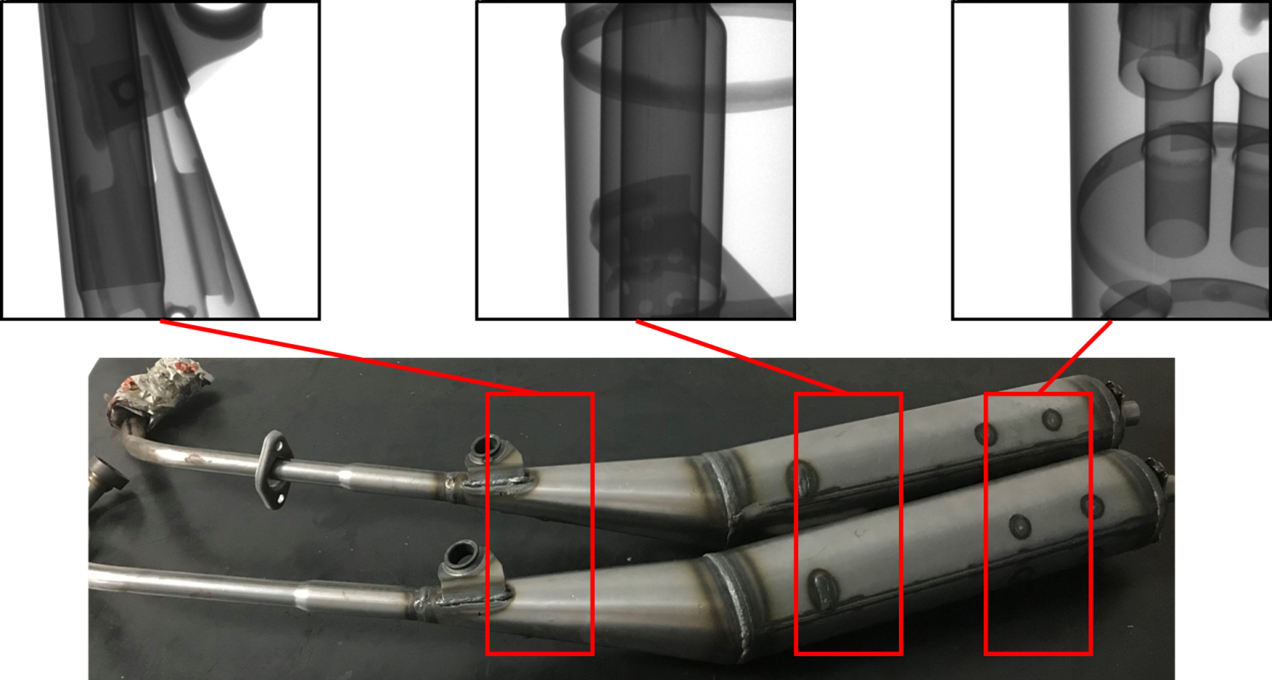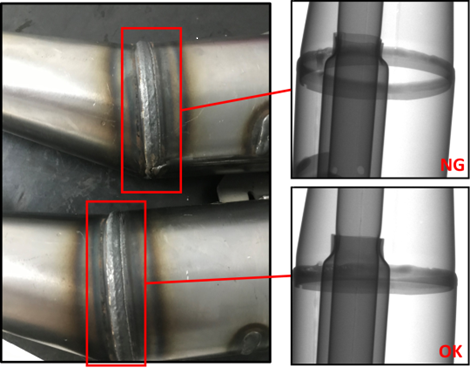Pipe Welding

This customer stands as a leading automotive component manufacturer in Southeast Asia, a major supplier for the Japanese brand name vehicles.
Historically, the inspecting method for the exhaust pipes welding entailed submerging the components in a water tank, with subsequent observation for the emergence of bubbles. This method was time-consuming, labor-intensive, and had a high margin of error. As the upstream suppliers started demanding enhanced manufacturing qualities, the factory sought our expertise to assess the possibility of incorporating X-ray inspection in their production process.
The customer provided two pipe samples. Due to the surface and geometric structures, it is impossible to inspect the defect with AOI or any other observation methods. In contrast, leveraging X-ray imaging allowed for the meticulous identification of welding structures and internal compositions. Given the presence of multiple weldings on each pipe, our automated imaging reconstruction procedure can combine the images of different angles to form a complete inspection image.

The images presented on the left depict both an accepted sample and a defective sample, thoughtfully supplied by the client. Conversely, the images on the right showcase the welds meticulously observed through X-ray examination.
The penetrating capability of X-rays enables a comprehensive view of the welds, unveiling the intricate internal structure of the exhaust pipe, in tandem with assessing the quality of the welding. Beyond surface-level scrutiny of welding attributes, X-ray imaging serves as a sophisticated tool for scrutinizing internal welding anomalies, including but not limited to uneven thickness, the presence of bubbles, or inadequate width resulting from variables such as temperature fluctuations, procedural intricacies, or the material composition of the weld.


For comparative analysis, the image above represents the external surface of the pipe sample, while the image below presents a corresponding X-ray reconstructed counterpart, serving as a foundational reference for external positioning and evaluation. The annotated region on the left highlights luminous areas within the weld, indicative of insufficient temperature during the welding rod construction process, thereby potentially compromising the welding strength.